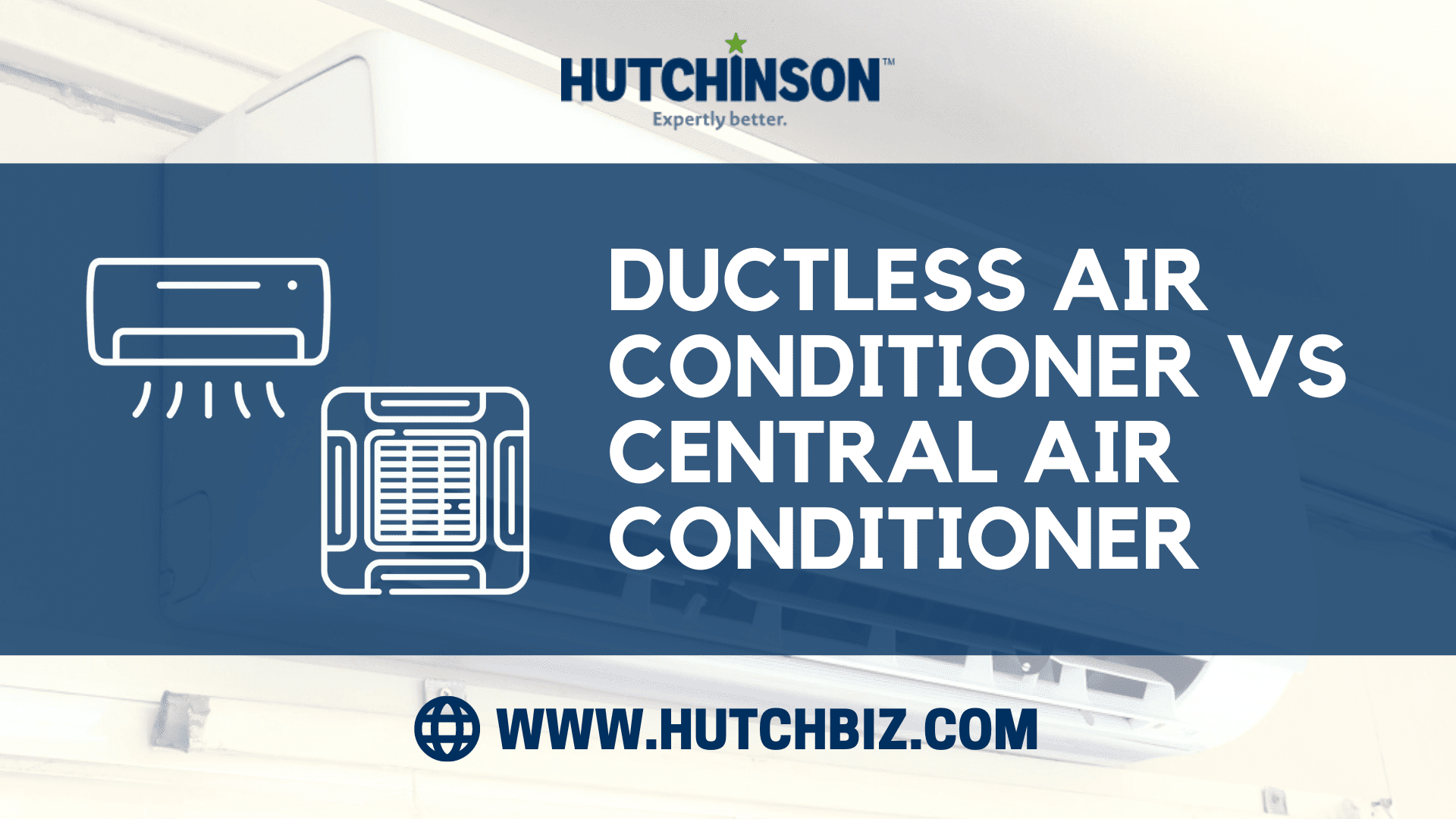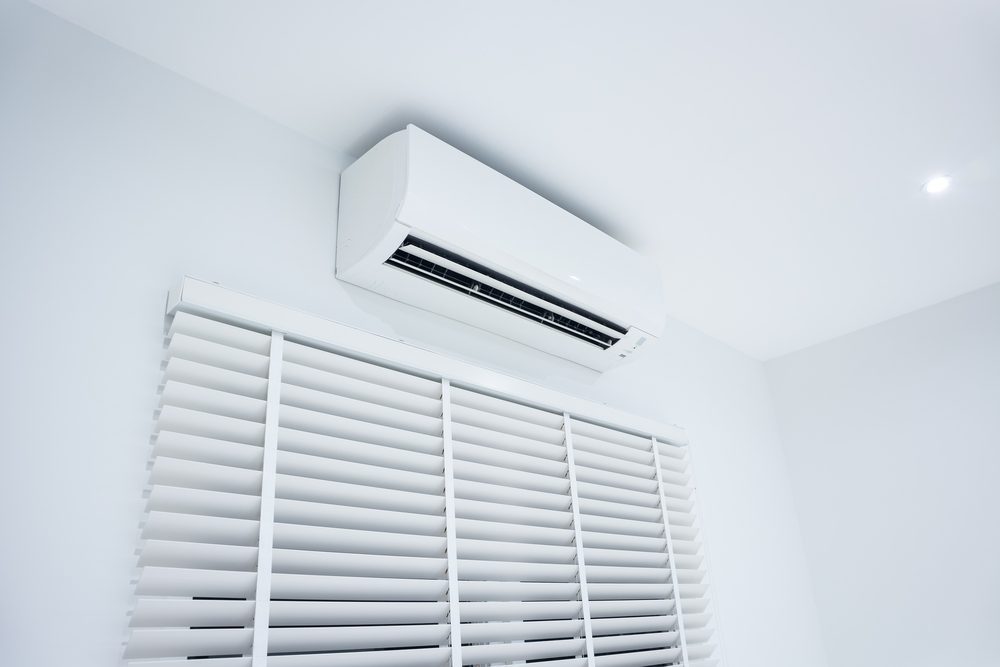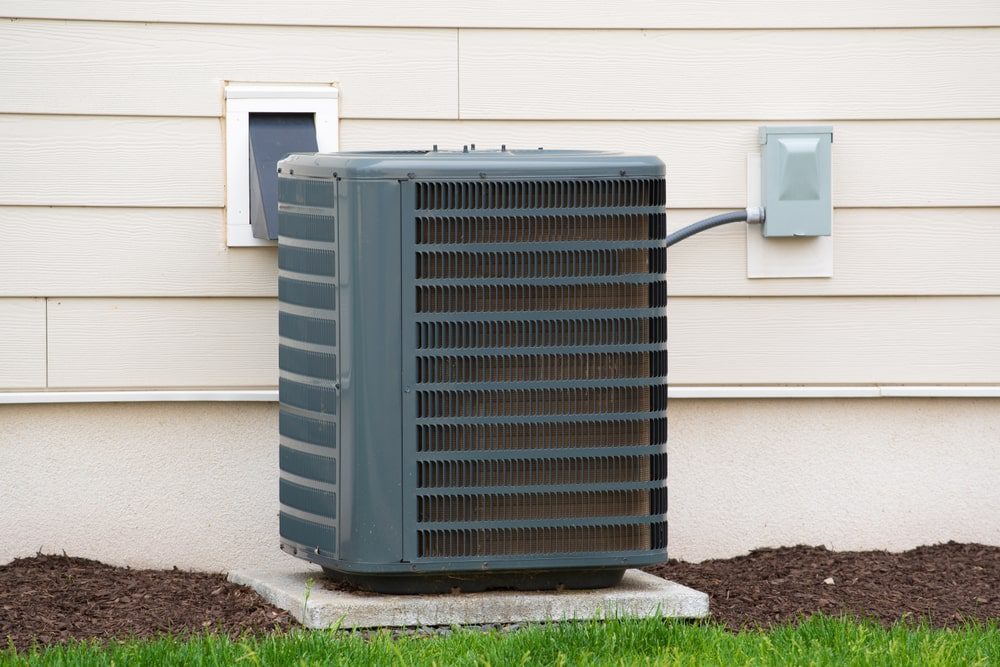
Are you looking at heating and cooling options to upgrade your home? Maybe you’re trying to decide between a ductless air conditioner vs central air conditioner, or you want to know more about a ductless mini-split system. You may just want insight to determine if one type of system will serve your needs better. Whatever the reason, you’re in the right place.
In the HVAC industry, saying one system is better or worse than another isn’t generally cut and dried, especially when upgrading the system in your home. You have specific needs and a system to match those to keep you cool or warm and comfortable all year round. This is why a professional company will get an understanding of your needs and create a solution that fits your lifestyle and budget.
We want you to be well informed, so we will define a ductless mini-split system, discuss the advantages and disadvantages, define a central air conditioner with benefits and drawbacks, and then break down which unit will work best in your home.
What Is a Ductless Mini Split System?
A ductless mini-split system has two parts. You’ll get an outdoor condenser or compressor and indoor air-handling parts. Each unit gets installed in each zone or room of your home where you want it to cool. Every unit has a unique remote so that you can operate it independently. The indoor parts of this system get suspended or mounted on the wall, and they get connected using a refrigerant line to the outdoor portion of the setup. This is why it’s called a ductless system; it doesn’t require you to install or have ducts in your home.

Although people commonly call it a “ductless AC,” this isn’t entirely correct. A ductless mini split system is a type of heat pump instead of a traditional air conditioner. How efficiently and quickly it works when you turn it on depends on the indoor units’ size, number, and location. You can choose from multi or single-zone units, and the one you choose will depend on the size of the space you want to cool, like a small single room or a big one or two-story home.
Advantages of a Ductless Air Conditioning System
There are several advantages that come with installing a ductless mini-split system in your home. The biggest ones include but are not limited to:
- Easy Installation – To install this unit, the technician has to suspend it from the ceiling or mount it on the wall, skipping the extensive ductwork. It’s quicker, depending on how many units you want, and getting it installed in a day is possible. All the tech has to do is drill a three-inch hole in the wall for the connecting pipe.
- Energy Efficient – Since no ducts exist, there will be less energy loss. The amount of energy you lose through the ducts will increase if there are gaps, holes, or cracks. Mini-split systems also precisely deliver air from the unit to the targeted room.
- Individual Temperature Control – Since you install the units into the spaces you want to cool, and they all have their remotes, you get precision control over the temperature. You can easily adjust it from zone to zone, allowing you to get maximum comfort without driving up your bills.
Disadvantages of a Ductless Air Conditioning System
We want you to get the complete picture when it comes to this system, so you should be aware of some disadvantages of installing them, including:
- Higher Upfront Costs – One significant disadvantage of this system is the initial cost. These systems cost are roughly 30% more than installing a central air unit. It also doesn’t include the cost of buying and installing the ducts.
- Limited Cooling Capability – Mini-split setups don’t work well in larger areas. They offer a very limited cooling capability and work better for smaller homes or individual rooms.
- Poor Ventilation – This system doesn’t pull fresh air from outside because it conditions your indoor air. Also, when you run the system, you close your windows, so bacteria, dust, and airborne particles float in the air.
What Is Central Air Conditioning?
Central air conditioners hook to your home’s duct system to cool the air, and it helps get a uniform and stable temperature in every room. These units come with a condenser coil, compressor, and evaporator coil as the main components, and they work in tandem to remove and absorb heat. They do this by switching refrigerant from gas to liquid form and then back to gas. They can help improve the interior air quality because they’ll catch and filter particles when they run.

You typically use a single thermostat to control your central air conditioner, which is the command center for your home’s cooling system. When the system senses it’s too warm inside, it sends a single to the unit to switch it on, making it more responsive and powerful than a traditional window unit.
Advantages of a Central Air Conditioning System
Central air conditioners have a few big benefits that come with installing them, which is why they’re so popular in the United States. A few benefits include:
- Suitable for Large Homes – These systems are made to meet the cooling demands of larger spaces, and they won’t struggle to keep up when the weather heats up.
- Don’t Disrupt the Home’s Aesthetics – The indoor unit is typically out of sight, hidden in the garage or basement. Vents distribute the air into each room, and they won’t disrupt your home’s design aesthetic because they’re unobtrusive.
- Lower Upfront Costs – If you exclude the ductwork installation, central air conditioners are significantly less to install than mini-split systems. If you already have ductwork in place, it’s very affordable.
Disadvantages of a Central Air Conditioning System
This system also has disadvantages; knowing what they are can help you decide which unit will work best for your space. They include:
- Higher Maintenance – The required ductwork needs frequent maintenance to keep it in top shape, including cleaning, sealing leaks, and adding insulation.
- Expensive to Run – Since this system heats or cools the whole house instead of individual rooms, running can cost more, especially in larger homes. The price will go up more if you don’t have adequate insulation.
- Sizing is Tricky – Getting the correct size for your central air can be tricky, and it can take time to ensure you get a robust system to cool your home without overwhelming it.
What’s Best for Your Home? Ductless Air Conditioner vs Central Air Conditioner
Your needs and circumstances determine whether a mini-split system or central air conditioning is best for your home. Central air conditioning may be cheaper if your home has ductwork. Because it’s built-in, central air cools the whole house evenly.
Ductless AC systems use less energy and give you more room control. Mini-split systems are cheaper and easier to install than ductwork. Ductless systems are good if you only need to cool a few rooms or your family prefers different temperatures.
The best choice depends on your home’s infrastructure, how much cooling you need, your budget, and how much you care about energy efficiency and individual temperature control.
Call Hutchinson for Ductless and Central AC Installation
If you’re still not sure what the difference is between a ductless air conditioner vs central air conditioner or which one would work best for your home, we can help. You can contact our experienced team at Hutchinson with questions or book an appointment today.


